The Fall Shift: Why Stress Rises Now
Fall marks a critical turning point for most workplaces. After a slower summer rhythm, the final quarter brings deadlines, budgets, and performance reviews into sharp focus. Teams are asked to accelerate quickly, and leaders often overlook the hidden toll this shift takes on employee wellbeing.
The reality is that this seasonal sprint can send stress levels soaring. Without clear workplace stress management strategies in place, burnout becomes more likely and more costly. Productivity dips, morale drops, and turnover risk climbs.
The good news is that burnout is not inevitable. With the right approach, managers and HR leaders can identify employee burnout signs early and put support systems in place. This fall, prevention is your most powerful tool.
How to Recognize the Signs of Employee Burnout
Burnout often starts quietly. What begins as a tough week can spiral into chronic exhaustion if not addressed. Managers and HR professionals should watch for both emotional and physical warning signs.
Emotional and Behavioral Cues
- Constant fatigue or lack of motivation at work, even after rest
- Irritability, mood swings, or withdrawal from colleagues
- Decreased focus, forgetfulness, or errors in routine tasks
- Cynicism or detachment from team goals
- Reduced quality of work or missed deadlines
Physical Indicators
- Persistent headaches or migraines
- Muscle tightness in the neck, shoulders, or back
- Digestive discomfort or disrupted sleep patterns
- Higher absenteeism or presenteeism (physically present but mentally checked out)
These employee burnout signs may seem small at first, but they accumulate quickly. The earlier they are recognized, the easier it is to intervene with solutions that work.
Why Fall Can Be a High-Risk Season
The leap from summer’s slower pace to fall’s sprint is one of the most overlooked drivers of workplace stress.
- Year-end pressure: Performance goals, annual reports, and reviews all converge.
- Budget finalization: Uncertainty around resources and headcount fuels anxiety.
- Post-vacation backlog: Returning employees face overflowing inboxes and deadlines.
- Accelerated projects: Teams feel they are running a marathon at sprint speed.
This rapid increase in pressure often overwhelms existing coping mechanisms. Without proactive workplace stress management, even strong employees risk burnout before Q4 is over.
Strategies to Prevent Employee Burnout
Build in Regular Wellness Check-Ins
Conversations are the first line of defense. Managers should prioritize weekly or biweekly check-ins that go beyond project updates. Ask questions like:
- “What has been the most draining part of your week?”
- “What could I do to help make your workload feel more manageable?”
Anonymous pulse surveys are another tool for HR leaders to capture honest feedback. What matters most is not the act of asking, it is following up with real solutions.
Create Stress-Reducing Daily Routines
Workplace culture often rewards constant busyness, but performance improves when teams are encouraged to pause. Build routines such as:
- Short mindfulness breaks during long meetings
- Walking 1:1s or outdoor breaks
- Desk stretch sessions to release physical tension
- Encouragement for employees to take a full lunch away from screens
These small actions reinforce that rest and recharge are not distractions but performance enhancers.
Make Wellness Visible and Accessible
Wellness initiatives should not live on paper only. They need to be visible in everyday operations. Leaders can normalize this by:
- Talking openly about stress management in team meetings
- Scheduling wellness activities during the workday rather than outside of it
- Recognizing and rewarding healthy behaviors, not just output
When wellness is woven into the fabric of company culture, employees feel supported instead of pressured to “power through.”
How Body Techniques Helps Prevent Burnout
For more than 25 years, Body Techniques has specialized in programs that help teams reduce stress, increase focus, and maintain energy during demanding seasons.
Onsite Corporate Massage
Chair and table massage events are one of the fastest ways to reduce stress. Employees leave feeling lighter, more energized, and physically relieved from desk tension.
Virtual Wellness for Hybrid Teams
With many teams working remotely or in hybrid formats, wellness must extend beyond the office. Body Techniques provides virtual wellness classes ranging from yoga to guided meditation and self-massage demos.
Seasonal Wellness Kickoffs
The transition into fall is the perfect moment to reset culture and expectations. Body Techniques partners with HR and managers to design seasonal events like Fall Wellness Kickoffs or Wellness Wednesdays.
Stress Management Programs
Comprehensive wellness programs can include yoga & meditation, massage, and employee appreciation events tailored to your culture. These help leaders move from “reacting” to burnout to preventing employee burnout with a sustained strategy.
Embedding Workplace Stress Management Into Culture
Body Techniques also works closely with leadership teams to ensure wellness becomes more than a perk. Embedding stress management into company culture starts with a few key practices:
- Normalize breaks and self-care: When managers participate in wellness activities, employees feel encouraged to do the same.
- Measure impact: Body Techniques supports organizations in tracking participation and feedback, helping HR teams show real ROI.
- Iterate over time: Ongoing partnership ensures programs adapt as employee needs evolve.
A Q4 Wellness Roadmap with Body Techniques
- Early October: Launch an employee wellness audit with surveys and wellness check-ins.
- Mid October: Partner with Body Techniques to introduce a massage event or virtual wellness series.
- Late October: Host a Fall Wellness Kickoff or appreciation day to re-energize the team.
- November: Expand offerings with hybrid-friendly options like guided mindfulness or stretch classes.
- Early December: Reinforce resilience with wellness touchpoints before year-end deadlines.
- End of Q4: Measure participation and results, then use insights to plan for the new year.
Reset, Recharge, and Finish Strong
Burnout is not a badge of honor, it is a warning sign. Leaders who ignore it risk losing both productivity and people. But leaders who recognize the signs early, embrace workplace stress management, and commit to preventing employee burnout create teams that thrive even in the busiest season.
Body Techniques makes that possible. From onsite massage to virtual wellness programs, we provide the tools, expertise, and support you need to help employees recharge and finish Q4 strong.
Contact Us to explore how we can tailor wellness to your team’s needs.



